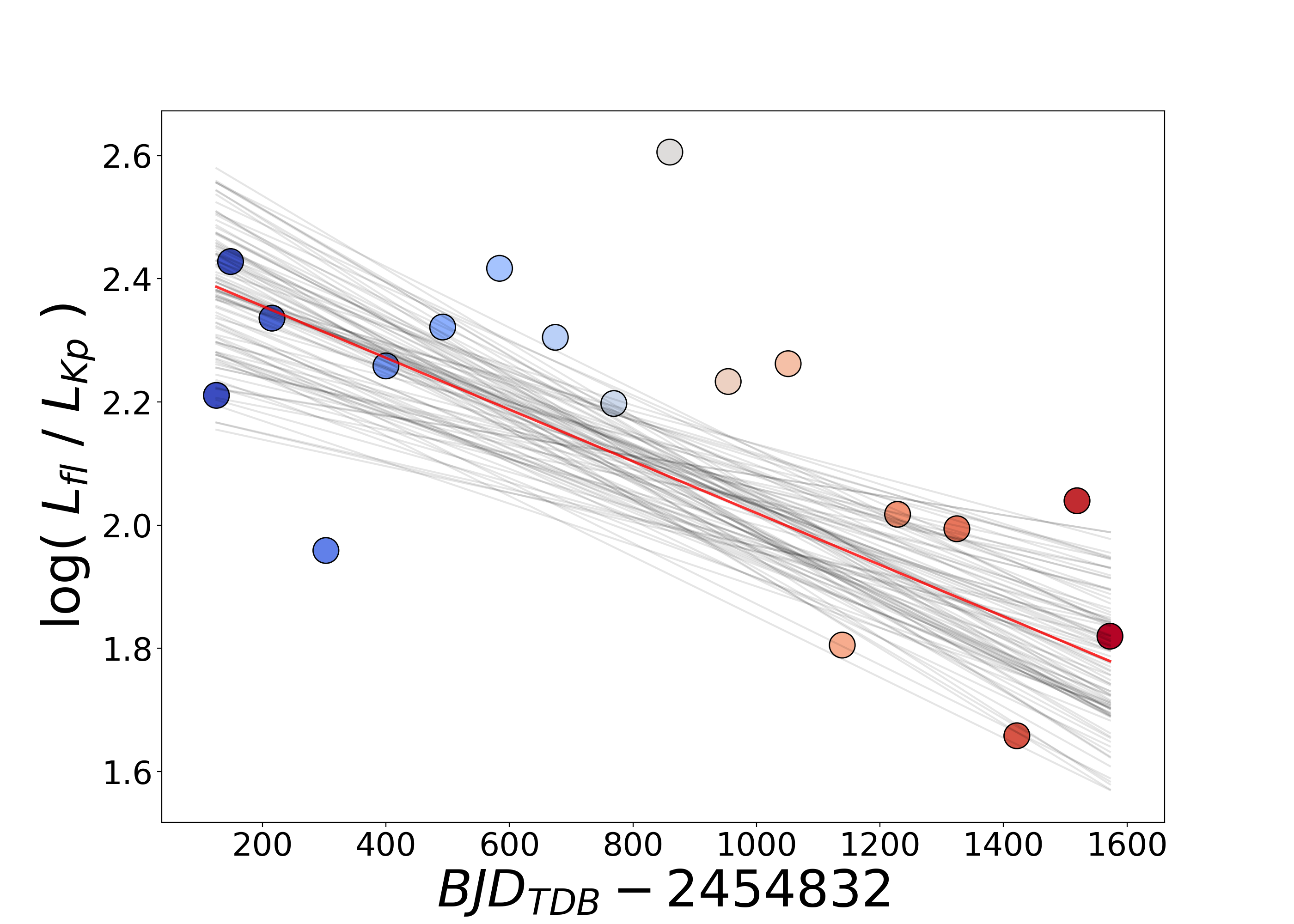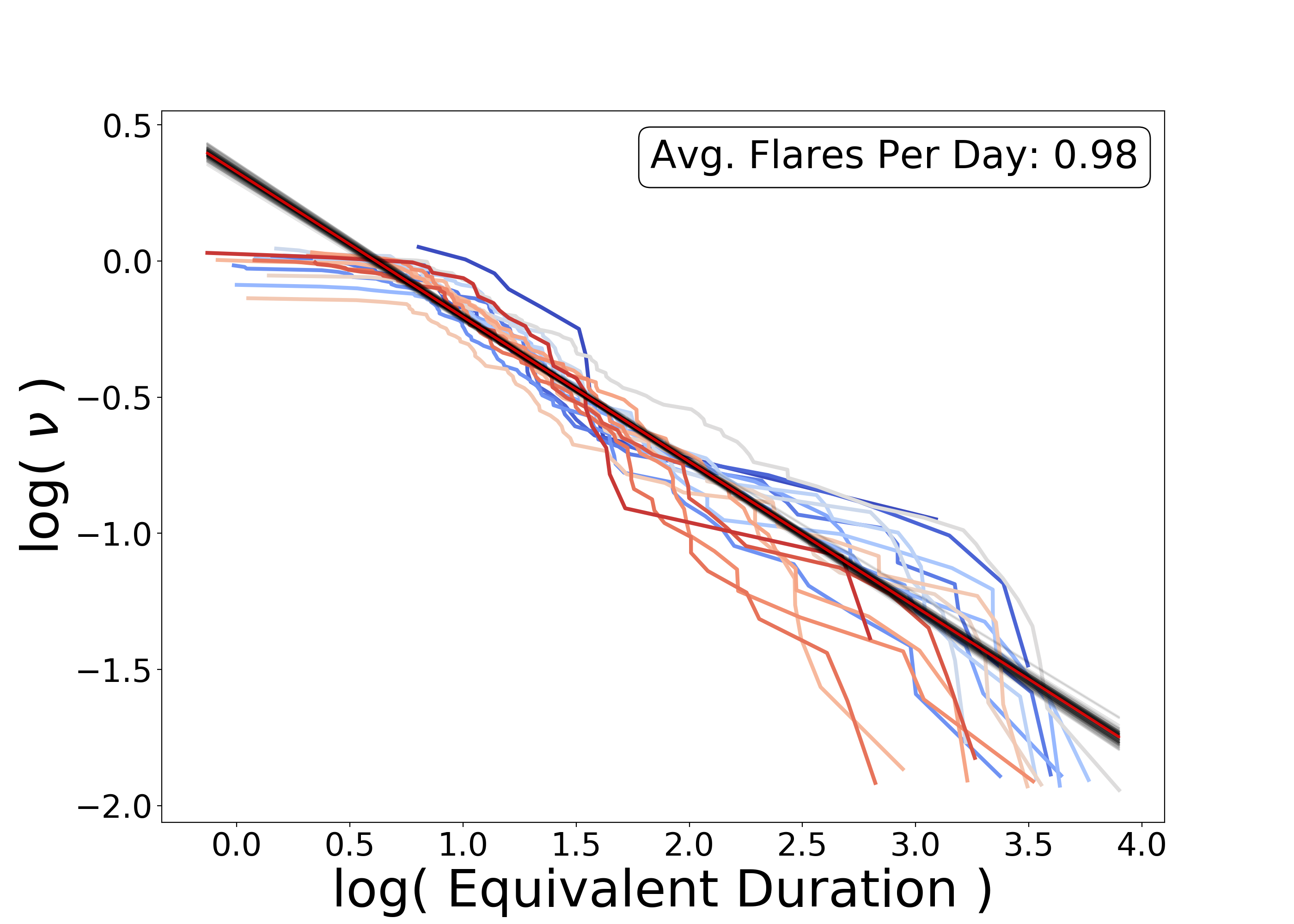The sun's solar cycle lasts roughly 11-years. We ask if other stars also have a cycle, and attempt to answer this using stellar flares as the metric (who's frequency changes within the cycle). The results aren't clear, but we only have access to 4-year observational periods from Kepler. We hope this could be a useful metric for longer observational periods.
Abstract: Measuring the prevalence and duration of stellar activity cycles gives key insight into the origin of stellar magnetic dynamos. The canonical activity cycle is the Sun's, which lasts approximately 11 years. Assuming this represents a typical stellar cycle, years to decades of observations are required to detect cyclic magnetic activity in other stars. Currently, activity cycles for other stars are traced through either precise integrated flux measurements, chromospheric emission line monitoring campaigns, or starspot tracking. However, all these approaches have challenges. Stellar activity data suggests that flares may be a good measure for tracking magnetic activity cycles. Here we briefly explore this idea by searching for coherent variations in the fractional luminosity emitted in white light flares over time.

